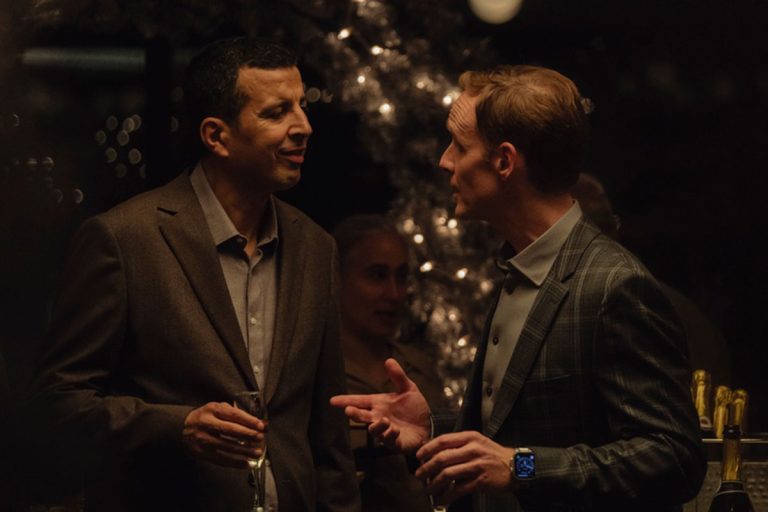For years, fans of Marvel’s first family had clamoured for a worthy on-screen adaptation of “The Fantastic Four,” as, despite having always been amongst Marvel’s most popular heroes alongside the likes of “Spider-Man,” the “X-Men,” and the “Avengers,” Hollywood just never quite managed to crack the formula for bringing the group to life. The first attempt never even got released, the second has its fans but ultimately failed to captivate on a wider scale, and the less said about the third, the better. So, the question was: could the fourth time finally be the charm for The Fantastic Four?
The movie is set in a totally different universe from that of the mainline MCU that we’ve come to know across the past 17 years, and that is immediately made abundantly clear by the unique visual feast that we are treated to. From the moment the intro credits conclude and we find ourselves transported into the movie’s retro-futuristic New York City setting, it’s obvious just how much love and attention have been paid to ensuring that this one is a treat for the eye, something we’ve sadly learned not to expect from recent MCU projects.
Film is, first and foremost, a visual medium, and that’s especially true for comic book movies, i.e., the kind of films that promise to transport us out of the real world and into a land of colour, spectacle, and whimsy, the sort of thing that you have to see to really believe. It’s pretty hard to feel that magic, however, when your movies look closer to a cold, rainy night in Stoke than the comic book fantasy lands that they’re adapting.
The recent output across the past few years from Marvel Studios and, more broadly, the Superhero genre as a whole, has unfortunately leaned too far in that direction. Long gone were the days of Sam Raimi’s lively New York City or Tim Burton’s nightmarish Gotham. Thankfully, the summer of 2025 seems to have potentially marked a turning point for the comic book blockbuster landscape, with both “Superman” and “The Fantastic 4: First Steps” showing glimpses of just how beautiful and transportative these movies can be.
Where the visuals truly reach another level, however, is once our leads venture into space, following the arrival on Earth of the Silver Surfer and her subsequent proclamation that Earth-828 has been marked for death by the eater of worlds, Galactus. It’s here that the film really gets to flex its visual chops, with director Matt Shakman wearing his inspirations on his sleeves for absolutely everybody to see. With shots that, it’s not a stretch to say, even the great Stanley Kubrick or Christopher Nolan would have no choice but to be proud of, finally giving us that awe-inspiring otherworldly feel that the MCU had been lacking for oh so long.
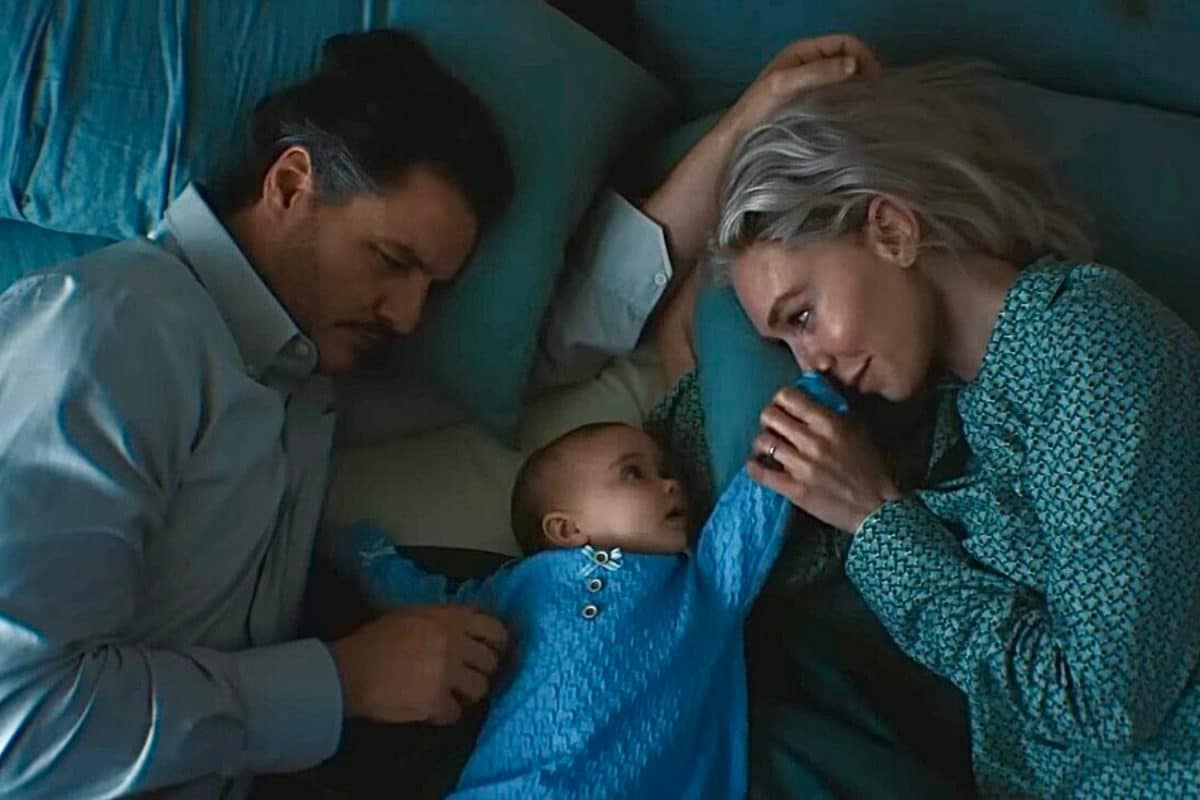
Upon arrival at Galactus’ domain, the team learns that the only way to save their planet is to offer Sue and Reed’s powerful unborn child in return, whom Galactus believes to be his natural successor. After refusing to comply, we get perhaps the coolest sequence in the entire film, and maybe even across the wider MCU landscape.
As the team attempts to escape and return home, the Silver Surfer follows, giving us one of the most tense, emotionally gripping, and action-packed sequences in recent memory, complete with the Silver Surfer ACTUALLY making use of her surfboard to aid her pursuit. A small but much-appreciated detail that once again exhibits the care placed into this film. What prevents the sequence from being perfect, however, is the misplaced humour, particularly from Joseph Quinn’s Johnny Storm. His jokes are entirely unfunny and always out of place in what is an otherwise intense sequence with the highest of stakes, perhaps acting as our first sore reminder that despite its uniqueness, this is in fact part of something much larger and more familiar.
Upon returning to Earth, we’re once again reminded of just how wonderful this world truly is, a world that feels so lived in, and one that makes it hard not to fantasize over how special it could be to see Spider-Man or Captain America or any other classic heroes exist in a world that feels this comical and eccentric. If every MCU movie could look this good, the general consensus around the franchise would look much, much different.
What becomes more and more apparent, however, is that though the retro-futuristic ‘60s aesthetic provides a pretty backdrop and acts as an ode to the golden age of comic books that spawned “The Fantastic Four,” narratively, we gain nothing from being set in this timeline. The movie, for all intents and purposes, remains virtually unchanged regardless of the time period, wasting what could have been another element that helped separate this from what we’ve come to know from the greater MCU.
Something that the film does manage to nail, however, is the casting, which, had they not, the movie might well have failed entirely. The team needed more than anything to be made up of four individuals who together feel like a real family; thankfully, in Pedro Pascal, Vanessa Kirby, Joseph Quinn, and Ebon Moss-Bachrach, they did just that. Each member of the family gets multiple moments with one another that allow you to feel the care they have for one another, with the most heartfelt moments in the film coming when the team is working as a unit, whether that’s to defend themselves, the world, or Sue and Reed’s son, Franklin.
Individually, the actors shine too. Firstly, with Pascal, whose often monotone delivery makes his other roles feel restrained, whereas here his approach actually works perfectly to deliver what’s needed from Mr Fantastic. Reed’s inability to separate emotion from logic and to choose with his heart and not his brain is delivered in exactly the way required to make him truly feel like the smartest man alive, always choosing statistical odds over sentiment.
As for Quinn’s Johnny Storm, he approaches the role with all the charisma and charm of his comic counterpart, matching the sizeable role he’s given in the plot with a performance that shows just why he’s become one of the most in-demand actors since his breakout role as Eddie Munson in “Stranger Things”. Though his humour occasionally borders on distracting, the fault lies not with Quinn, who delivers his material with precision and leaves you wanting to see more of him in the role.
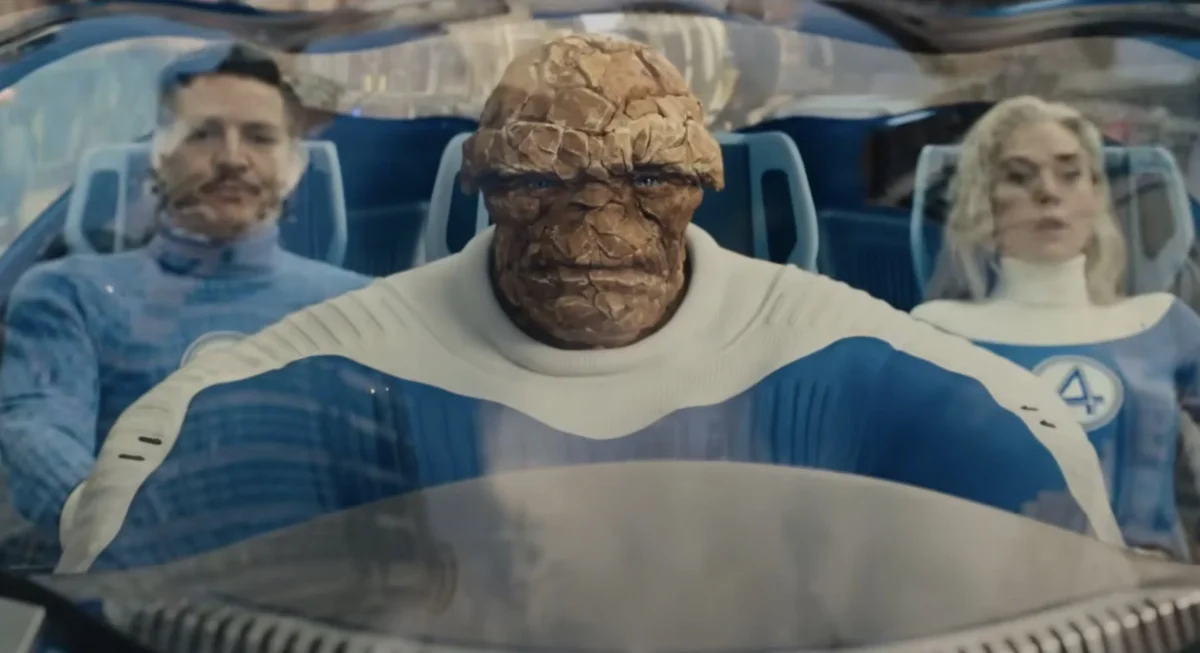
As for Vanessa Kirby and Ebon Moss-Bachrach, they more than live up to expectations as Sue Storm and Ben Grimm. Kirby shines brightest — Sue is the film’s emotional core, and that wouldn’t land half as well without an actress of her presence. And while The Thing could’ve used a bit more screen time, Moss-Bachrach makes every moment count. It’s in the film’s final 30 minutes, however, that we are finally delivered our second reminder that this is, unfortunately, an MCU movie. That’s because, despite the first two acts playing visually like nothing we’ve seen from the studio before, the final one sadly functions as a return to the median, with Marvel’s historic inability to stick the landing rearing its ugly head once again.
The MCU has long struggled with not knowing how to stick the landing with its movies. Often, they’ll hook you throughout with a grounded and human tale before a messy CGI battle or underbaked conclusion leaves you with a bitter taste in your mouth. On other occasions, they might just have you half asleep until an epic final act pulls you all the way back in, but regardless, it’s not often that they manage to maintain a solid pace throughout with consistent filmmaking and storytelling to match.
Regrettably, it’s the same old story with “The Fantastic Four: First Steps”, as moments of abhorrent green screen and CGI, the all too familiar grey skies, and a flat conclusion that lacked any sense of satisfaction leave much to be desired when compared to what came before it. This is only worsened by the post-credit scene that delivers one final reminder that you can dread it, run from it, but destiny arrives all the same. Death, taxes, and the MCU limiting creativity through forcefully setting up future projects at the cost of a contained story.
It’s a sad state of affairs, but it doesn’t totally discount the wealth of positives that the film still has to offer, none more prominent than the reassurance that, despite the post- “Avengers: Endgame” slump, they’ve still got what it takes to entertain and provide a spectacle. It’s a piece of hope to hang on to, one final slice of optimism that tells us that despite its flaws, somewhere in there is the magic we all fell in love with all those years ago.
It’s a potential glimmer of sunshine in what has been an otherwise pretty long and dark tunnel that ends with the upcoming Avengers movies. The sort of movies that can make or break a franchise’s future, and though it may not have been perfect, “The Fantastic Four: First Steps” might just have done enough to get us through to a finish line that could just be worth throwing some cautious optimism towards.



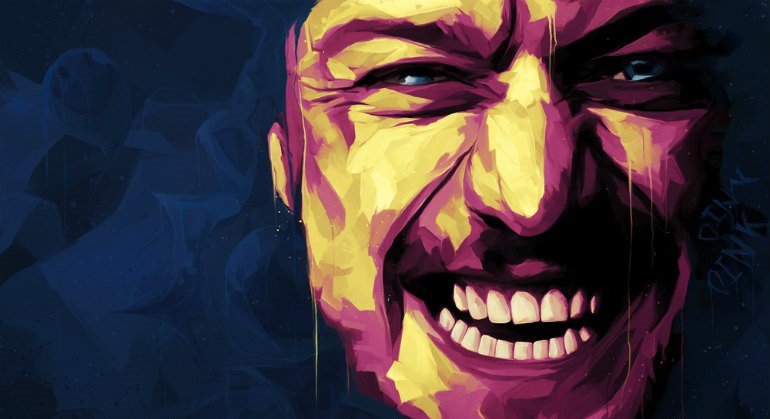
![Brazen [2022] Netflix Review: A Disaster Fest that Never Amounts to Anything](https://79468c92.delivery.rocketcdn.me/wp-content/uploads/2022/01/Brazen_Unit_04905_R-768x511.jpg)
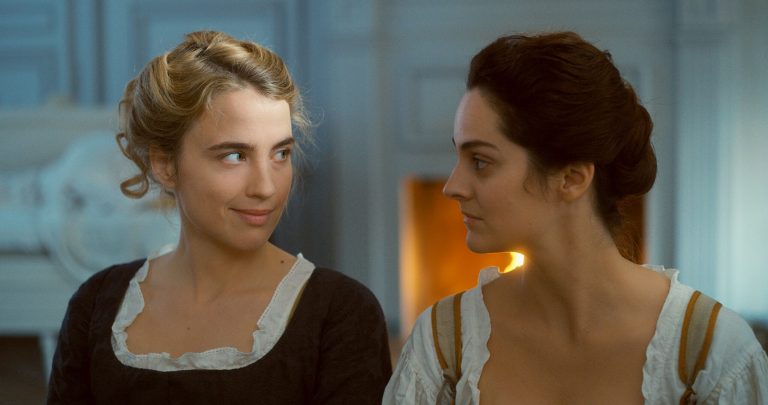
![No Fathers in Kashmir [2019]: ‘HFF’ Review – An Outsider’s perspective that imperfectly tells the story of Kashmir](https://79468c92.delivery.rocketcdn.me/wp-content/uploads/2019/05/No-Fathers-In-Kashmir1-768x419.jpg)
![Judas and the Black Messiah [2021]: ‘Sundance’ Review – Daniel Kaluuya is electrifying in this powerful and relevant tale about the BPP](https://79468c92.delivery.rocketcdn.me/wp-content/uploads/2021/02/Judas-and-the-Black-Messiah-Review-2-768x432.jpg)
